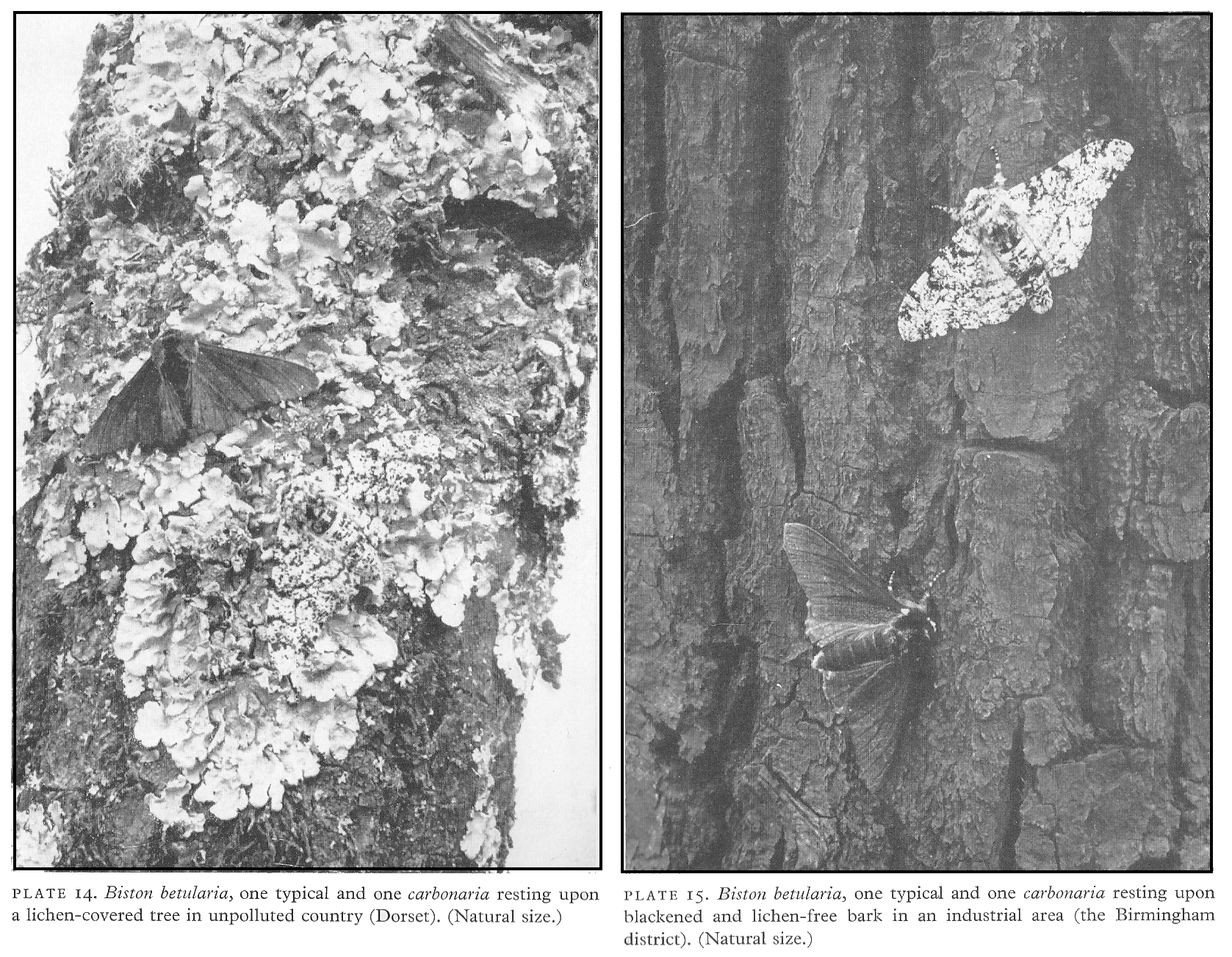
Natural Selection on Biston betularia in two environments
The Pepper Moth (Biston betularia) occurs in
two basic colour phases, the typical black & white
peppered or "light" form [left] and the carbonaria or
"dark" form [right]. The carbonaria form was at one
time thought to be a separate species, but has since been
shown to be due to a mutation at a single locus to a dominant
allele. The light form when it rests on lichen-covered trees
is highly cryptic to avian predators (try to find the
light moth in the left-hand photo). The black form in contrast
shows up plainly: experiments have shown that birds
preferentially identify and eat this form against the lichen
background.
The increase of the carbonaria form can be traced in the insect collections of the English aristocracy over several hundred years. It is rare in collections prior to the mid-1800s, but with the onset of the Industrial Revolution ca. 1830, unregulated smoke pollution coated the trees in industrial cities (such as Birmingham) with soot, such that the relatively crypsis of the two forms was reversed [right-hand photo]. Experiments again show that the less cryptic light form is preferentially predated by birds. In many districts, the frequency of the carbonaria form rose to >90%. With the decline of heavy industry and the onset of pollution control in the late 20th century, new trees have grown up that lack the soot and are once again covered with lichen. Predictably, the frequency of the light form has again increased.
The Biston story is one of the best studied examples of Ecological Genetics focused on phenotypic variation in Nature, and is the basis of the laboratory computer simulation of natural selection used in this course.
The increase of the carbonaria form can be traced in the insect collections of the English aristocracy over several hundred years. It is rare in collections prior to the mid-1800s, but with the onset of the Industrial Revolution ca. 1830, unregulated smoke pollution coated the trees in industrial cities (such as Birmingham) with soot, such that the relatively crypsis of the two forms was reversed [right-hand photo]. Experiments again show that the less cryptic light form is preferentially predated by birds. In many districts, the frequency of the carbonaria form rose to >90%. With the decline of heavy industry and the onset of pollution control in the late 20th century, new trees have grown up that lack the soot and are once again covered with lichen. Predictably, the frequency of the light form has again increased.
The Biston story is one of the best studied examples of Ecological Genetics focused on phenotypic variation in Nature, and is the basis of the laboratory computer simulation of natural selection used in this course.
Figure © 1975 EB Ford; Text material © 2018 by Steven M. Carr